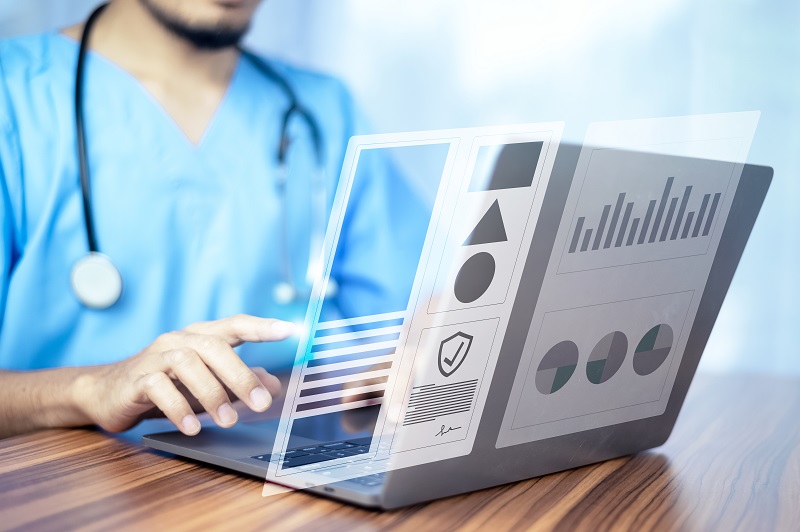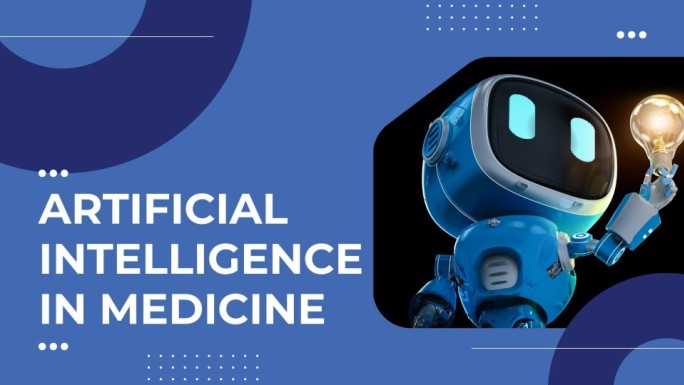4 popular applications of FHIR in healthcare
FHIR (Fast Healthcare Interoperability Resources), a modern approach to data sharing, not only aligns with the technological demands of the present but also lays the foundation for a more connected and patient-centric future. This article will share with you a journey to explore the popular applications of FHIR in healthcare, unraveling its potential to reshape how health information is accessed, shared, and utilized across the entire spectrum of healthcare services.
Application of FHIR in exchanging patient data

FHIR provides a standardized, modern approach to exchanging health information, enabling seamless communication among different healthcare systems. Here are key aspects of FHIR's application in patient data exchange:
Standardized data formats
FHIR utilizes standardized data formats, including JSON and XML, making it easier to represent and exchange healthcare data consistently.
RESTful APIs for interoperability
FHIR is built on RESTful principles, allowing for the development of Application Programming Interfaces (APIs) that are easy to use and implement. These APIs enable healthcare systems to communicate and exchange patient data in a standardized way.
Patient-centric approach
FHIR has a patient-centric model, emphasizing the importance of putting patients at the center of their care. Patient data, including demographics, medical history, and treatment plans, can be easily exchanged between different healthcare providers and systems.
Real-time access to information
FHIR facilitates real-time access to patient data. Healthcare providers can retrieve up-to-date information about a patient's medical history, medications, allergies, and other relevant data during clinical encounters.
Modular data components (resources)
FHIR organizes data into modular components called resources (e.g., Patient, Medication, Observation). These resources can be exchanged individually, allowing for more granular and efficient data sharing.
Consent Management
FHIR includes capabilities for managing patient consent regarding the sharing of health information. This ensures that patient privacy preferences are respected and adhered to during data exchange.
Integration with Electronic Health Records (EHRs)
FHIR can be integrated into existing EHR systems, enabling healthcare organizations to adopt FHIR gradually. This integration enhances the interoperability of EHRs, allowing for the seamless exchange of patient data between different healthcare entities.
Integration with Telehealth and remote patient monitoring
FHIR facilitates the integration of data from remote monitoring devices, wearables, and other telehealth tools. This allows healthcare providers to remotely monitor patient vital signs, adherence to treatment plans, and other relevant data.
Cross-organizational data sharing
FHIR supports the sharing of patient data across different healthcare organizations. This is particularly valuable in scenarios where a patient receives care from multiple providers or when transitioning between different healthcare settings.
Application of FHIR to the pharmaceutical industry

Healthcare information sharing
FHIR allows healthcare providers, manufacturers, physicians, and patients to easily and securely share healthcare data. This enhances interaction and synchronization between different healthcare information systems while providing accurate and timely information for treatment and medication management.
Drug catalog management
FHIR supports the management of drug catalogs, including information about types of drugs, side effects, drug interactions, and recommended dosages. This helps manufacturers and pharmaceutical providers track and manage information about their products efficiently.
Communication between medication management systems and healthcare systems
FHIR provides a standard interface for transmitting data between medication management systems and healthcare systems. This enables seamless and consistent sharing of information such as prescriptions, medical histories, and medication information between different systems.
Read more: Some useful notes for better using FHIR
Medication adherence monitoring
FHIR can be used to record information about medication usage and adherence by patients. By sharing this data with pharmaceutical providers, experts can assess the effectiveness of therapies and support patients in adhering to the correct dosages and treatment schedules.
Integration of healthcare data into mobile applications
FHIR provides a standardized way to integrate healthcare data into mobile applications. This allows patients to access their healthcare information, manage prescriptions, and receive health-related notifications through their mobile devices.
Application of FHIR in clinical trials

Sharing trial results
FHIR enables easy and efficient sharing of clinical trial results. Through resources like DiagnosticReport and Observation, test results, medical images, and other clinical data can be packaged and shared among different healthcare systems.
Integration of trial data
FHIR helps in integrating clinical trial data from various sources. Resources such as Specimen and Devices are used to represent information about trial samples and relevant medical devices. This allows for effective consolidation and management of data from different trial systems.
Tracking trial processes
FHIR provides resources like Procedure and Encounter to track trial processes. By recording information about the timing, location, and outcomes of procedures, FHIR helps improve the management and tracking of trial processes accurately and consistently.
Management of trial data
FHIR offers resources like ResearchStudy and ResearchSubject to manage trial data in research and trials. By identifying information about study subjects, collecting data, and monitoring the progress of research, FHIR facilitates the creation of an efficient and consistent trial data management system.
Integration with other systems
FHIR supports the integration of trial data with other healthcare systems such as Electronic Health Record (EHR) and Clinical Trial Management System (CTMS). This improves the interaction and sharing of information between systems, enhancing the ability to analyze and utilize trial data in research and healthcare development.
Application of FHIR in public health reporting

Disease surveillance and reporting
FHIR enables the standardized exchange of health data related to infectious diseases, chronic conditions, and other public health concerns. This facilitates timely reporting to public health agencies for disease surveillance and monitoring.
Outbreak management
During outbreaks or public health emergencies, FHIR supports the rapid exchange of patient data, including symptoms, test results, and contact tracing information. This aids public health officials in identifying and managing outbreaks more effectively.
Immunization reporting
FHIR is used for standardized reporting of immunization data. It allows healthcare providers to report administered vaccines to public health agencies, contributing to vaccination coverage monitoring and management.
Notifiable conditions reporting
FHIR supports the reporting of notifiable conditions, which are diseases or conditions that are required by law to be reported to public health authorities. This ensures that relevant information is shared promptly to facilitate public health interventions.
Syndromic surveillance
FHIR facilitates the exchange of syndromic surveillance data, which involves monitoring non-specific indicators or patterns of symptoms that may indicate a public health threat. This supports early detection and response to emerging health issues.
Laboratory results reporting
Standardized reporting of laboratory results through FHIR ensures that public health agencies receive timely and accurate information. This is essential for tracking the prevalence of specific conditions and responding to potential outbreaks.
Birth and death reporting
FHIR is employed in the standardized reporting of vital statistics, including birth and death data. This assists public health agencies in maintaining accurate records and generating vital statistics reports.
Environmental health data reporting
FHIR can be utilized to exchange data related to environmental health factors that may impact public health. This includes information on air quality, water quality, and other environmental indicators.
Chronic disease management and reporting
FHIR supports the exchange of data related to chronic diseases, aiding public health agencies in monitoring and managing conditions such as diabetes, cardiovascular diseases, and respiratory conditions.
Public health research
FHIR's interoperability features support public health research by facilitating the exchange of anonymized and aggregated health data. This contributes to a better understanding of population health trends and the development of evidence-based public health strategies.
Conclusion
As the digital revolution continues to redefine healthcare, the widespread applications of FHIR stand testament to its transformative influence. From empowering patients with greater control over their health data to fostering collaboration among diverse healthcare systems, FHIR is not merely a technology but a force propelling us toward a more interconnected and patient-centered era. As we navigate the complexity of healthcare, the adaptability of FHIR promises to be a guiding light, showing the path toward a more efficient, collaborative, and ultimately, compassionate healthcare ecosystem.





